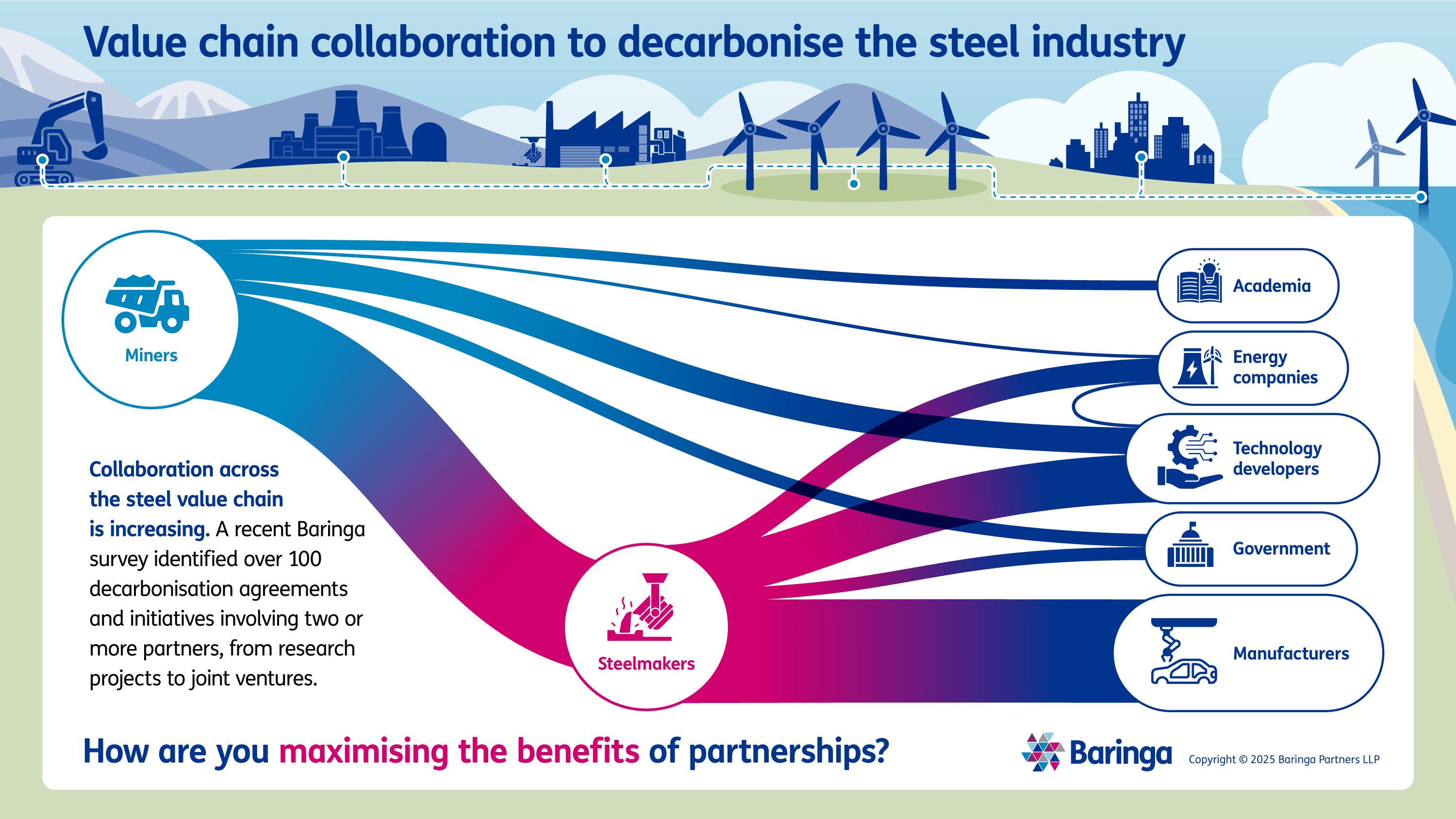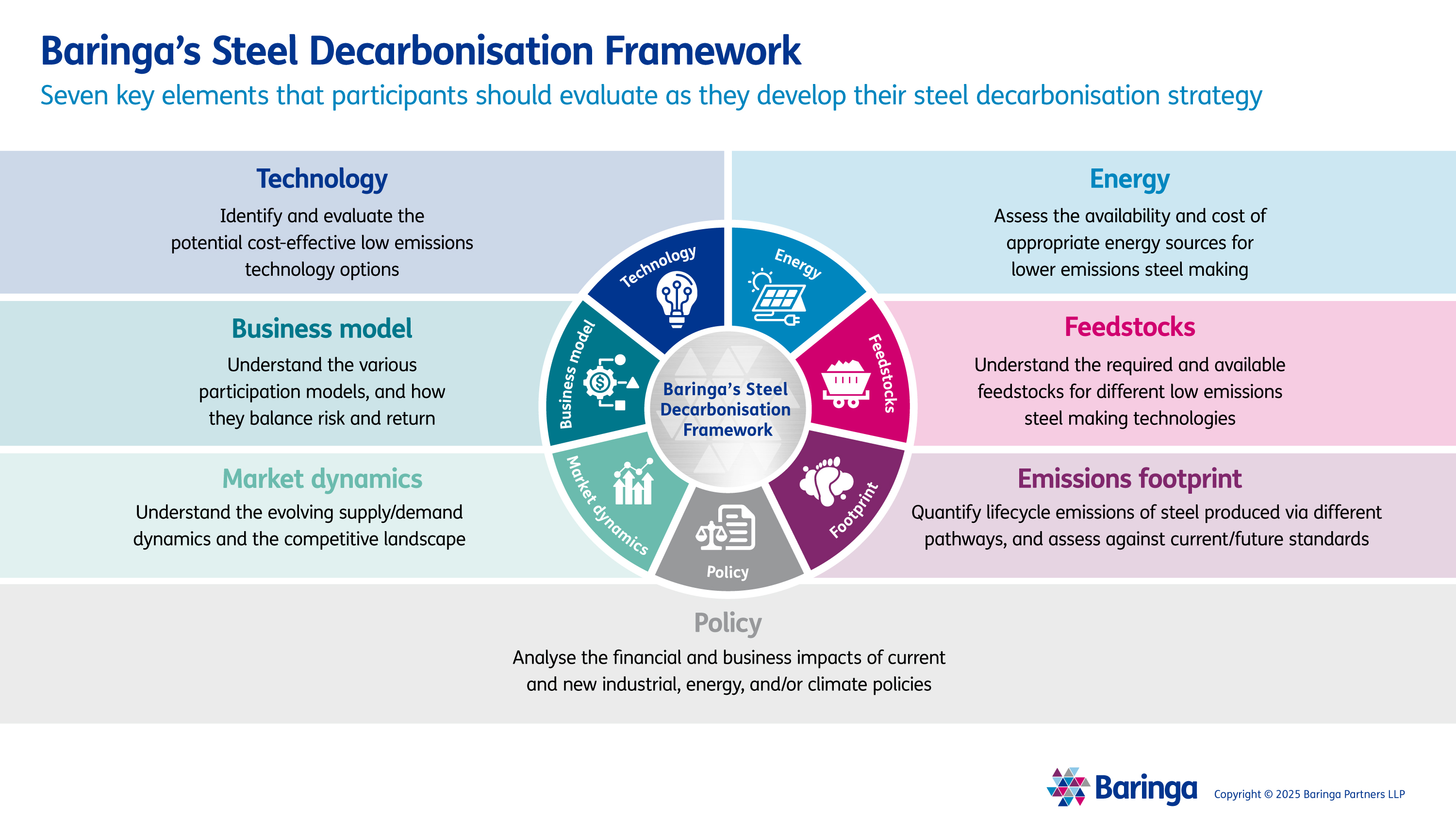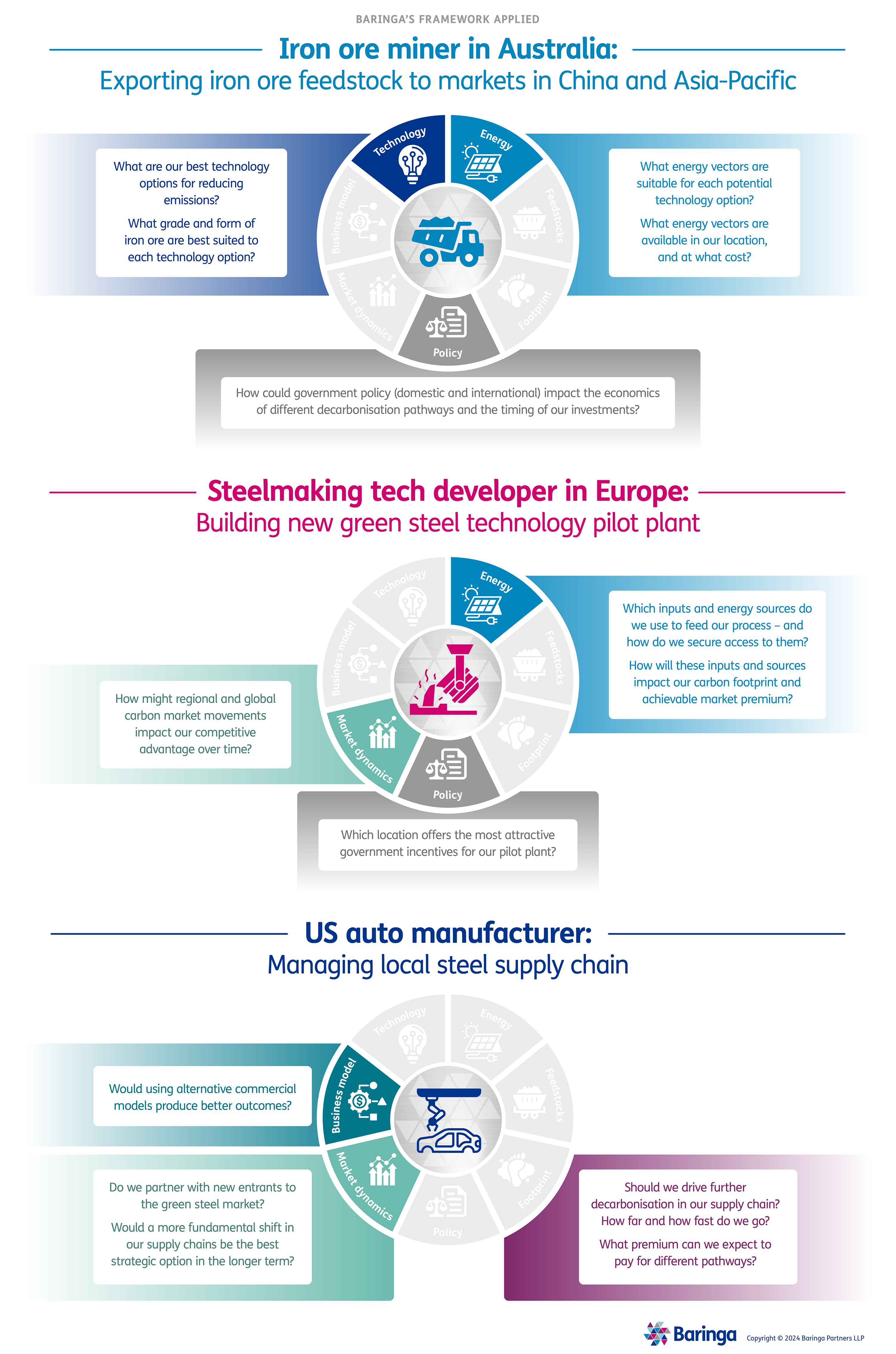
Steel decarbonisation: forging a framework for successful cross-industry collaboration
6 min read 29 January 2025
Accounting for around 8% of global CO2 emissions, steel is one of the biggest-emitting industries on the planet, and a top target for decarbonisation. However, such a complex and carbon intensive sector can’t achieve such a transformation on its own.
For steel to decarbonise at speed and scale, it will take coordinated action across the value chain, which is far from easy. How can every player make sure they are pulling the right levers, and striking the right balance of risk and reward? In this article, we explore how Baringa’s steel decarbonisation framework can help simplify those choices and accelerate progress to net zero.
Steel’s journey to decarbonisation is far from straightforward
With its energy-intensive production processes and complex value chain, primary steelmaking faces an especially tough decarbonisation challenge.
An array of new technologies are being put forward as potential solutions, and pioneering projects like Stegra (formerly H2 GreenSteel) are being cited as models for the sector. However, most of these approaches have yet to be proven in the real world and aren’t yet economical at scale. There is also a huge amount of existing, relatively new capacity that cannot be retrofitted or replaced overnight.
In reality, there is no one silver technological bullet. Decarbonising existing steelmaking assets is a multifaceted and expensive problem to solve. Most producers do not have the capital, expertise, or incentive to tackle it on their own. That is where cross-industry collaboration has a pivotal role to play in accelerating decarbonisation impact.
Progress through partnerships
There’s been a noticeable uptick in collaboration across the steel value chain, especially in the last three to five years. Growing numbers of iron ore miners, technology developers, and end users (from industries like automotive, construction, and manufacturing) are joining forces with steelmakers and iron ore miners. Players across the value chain see the potential risks and opportunities that steel decarbonisation presents to their businesses, and they want to drive greater progress.

This wider participation is a welcome boost. Every player brings something different to the table, be it access to capital, expertise, physical assets, intellectual property, or market power. Their participation should be a major net positive – but that can only happen if participants can play complementary roles, at the right moments and in the right projects. So how can each player understand how they fit into the bigger decarbonisation picture, and ensure they are directing their expertise, capital, and resources in the most effective way?
A framework for simplifying cross-industry collaboration
There is no one-size-fits-all approach to steel decarbonisation. Participants will be approaching the issue from different contexts, face different challenges and opportunities, and have different influences and impacts on the wider value chain. To help guide their efforts, Baringa has developed a holistic steel decarbonisation framework. It presents seven key and interconnected considerations that inform a robust decarbonisation strategy.

It is natural for organisations to adopt a tight focus on areas that directly impact them. But when dealing with an issue as multifaceted as decarbonisation, this means that they might miss crucial aspects of the bigger picture. Baringa’s framework is aimed at broadening participants’ perspective, helping them orient themselves within the wider steel decarbonisation landscape and consider opportunities and risks that they might have otherwise overlooked.
Depending on their starting point and context, organisations will need to prioritise different parts of the framework, and ask different questions as they work through it. Below, we illustrate what those questions could look like for three theoretical players in the steel value chain.

In each of the scenarios above, one or more of the elements is effectively fixed and well understood by the participant. Other elements present a host of options and unknowns. Addressing these gaps and, critically, understanding how they interact and the resulting risks, opportunities and trade-offs, is key to making the right choices.
Take on the challenge, maximise your impact
At its heart, steel decarbonisation is a complex optimisation puzzle – and Baringa is uniquely positioned to help organisations to solve it. We start by helping you apply our steel decarbonisation framework, which provides structure and clarity to your efforts. We then add deep expertise across energy, carbon accounting and markets, policy and regulation, along with our leading techno-economic modelling capability. Working together, we help clarify your specific context, assess your options, and ultimately define your optimal strategy – maximising your impact and opportunities as you tackle the steel decarbonisation challenge.
If you’d like to learn more about Baringa’s steel decarbonisation framework, or how we can help you develop a strategy for accelerating steel’s progress to net zero, get in touch with Hugh Greene, Elizabeth van der Heijden or Linda Cardillo today. Baringa is ready to support you in making the right decarbonisation decisions and investments.
Our Experts



Related Insights

How can a digital supply chain drive resilience in the age of the digital energy transition?
Four key areas where we believe digital technologies have the greatest potential to transform the performance, profitability and resilience of supply chains navigating the energy transition.
Read more
What is the impact of Australia's carbon policy on the mining sector, and how can companies adapt?
As Australia strives to reduce its carbon emissions and transition towards a low-carbon economy, the mining industry has found itself at the centre of policy attention.
Read more
Digital transformation and decarbonisation in the energy sector
Energy leaders are using digital technologies and data to fast-track their journeys to decarbonisation.
Read more
Accelerating the energy transition with digital innovation
Let us help you find your best digital route through the energy transition.
Read moreIs digital and AI delivering what your business needs?
Digital and AI can solve your toughest challenges and elevate your business performance. But success isn’t always straightforward. Where can you unlock opportunity? And what does it take to set the foundation for lasting success?